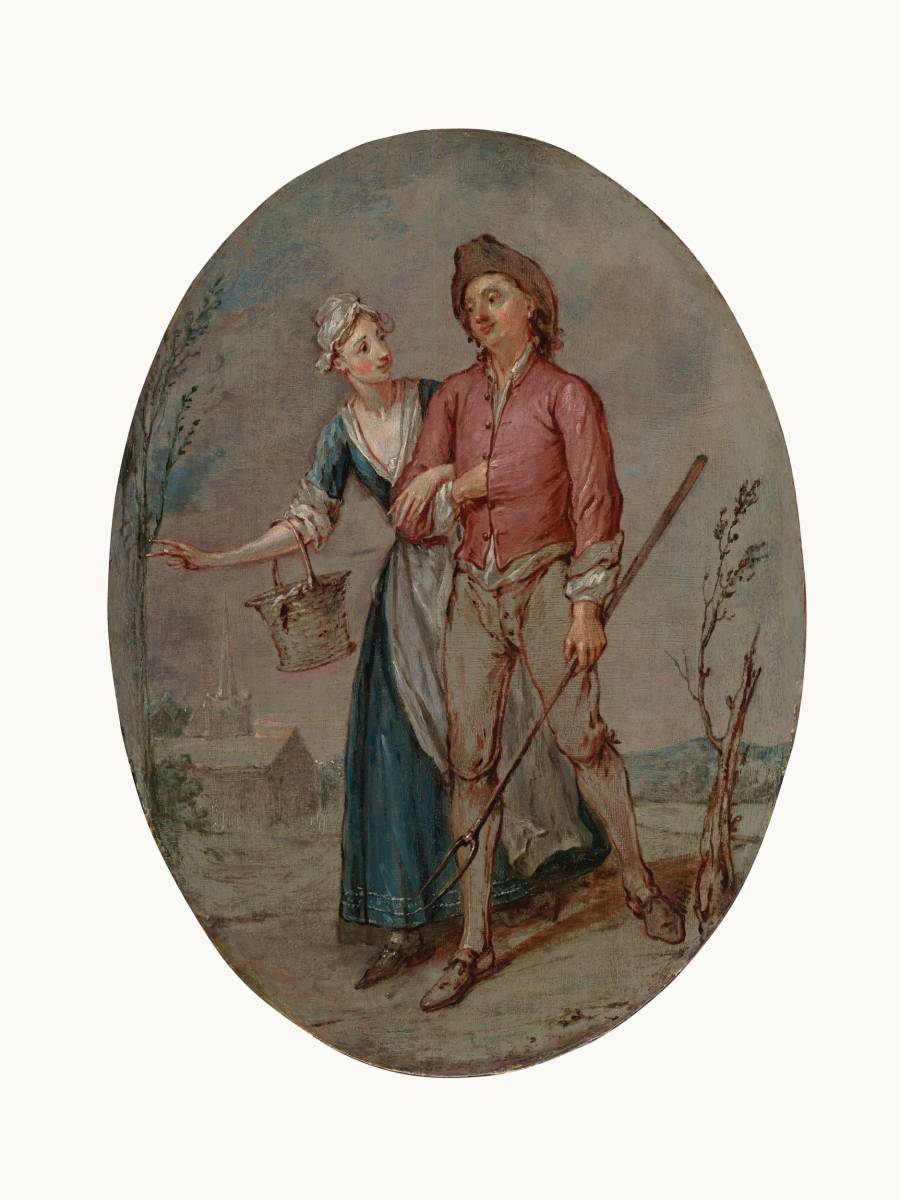This characteristic, small oil on panel was painted by Marcellus Laroon in the 1730s and first recorded in the collection of the great Augustan patrician, James Brydges, Duke of Chandos. Laroon had a fascinating, and remarkably long, career as a painter. Born in London, the son of Marcellus Laroon the elder, a painter who had been born at The Hague, who was, in turn, the son of Marcel Lauron, a French painter of portraits and landscapes.
Laroon senior worked for the book trade in London, producing a famous series of engravings of The Cryes of the City of London, published by Pierce Tempest. His son, at aged only eighteen, attended the peace conference at Rijswijk in Holland as a page before visiting Venice with Charles Montagu, fourth Earl of Manchester. Laroon practiced as a painter, but also as a singer for Colley Cibber at the Drury Lane Theatre. From singer to soldier, Laroon joined the 1st regiment of foot guards campaigning in Flanders, Spain and eventually Scotland.
Whilst Laroon was at the heart of artistic life in London, subscribing to Kneller’s Great Queen Street Academy and being listed as a member of the Rose and Crown Club, Laroon’s practice seems to have been largely ancillary, he certainly did not rely on painting to provide an income. This gave him tremendous freedom in the subjects he chose to paint. Laroon interpreted eighteenth-century English life with sympathetic humour and refinement. His painted scenes, particularly his conversation pieces, tend to retain a quality of the theatre, staging the figures as though in a contemporary production. The present rustic scene shows Laroon’s distinctive technique, thinly painted in very liquid oil, the painting has the sprightly quality of a pen and ink drawing. Laroon was very alive to trends in French painting and almost certainly saw engravings of the works of Watteau.
First recorded by Robert Raines as from the collection James Brydges, 1st Duke of Chandos, this small oil can therefore be situated in one of the great mansions of the early eighteenth century, Cannons. Situated in Little Stanmore, Middlesex, the house was constructed between 1713 and 1724, designed by a succession of architects, it contained a series of spectacular interiors. The collection included Caravaggio’s Boy bitten by a Lizard now in the National Gallery, London and the first Poussin in a British collection, Hercules Between Vice and Virtue, now at Stourhead. Chandos’s remarkable patronage attracted, amongst others, Handel, who composed the Chandos anthems at the house.
